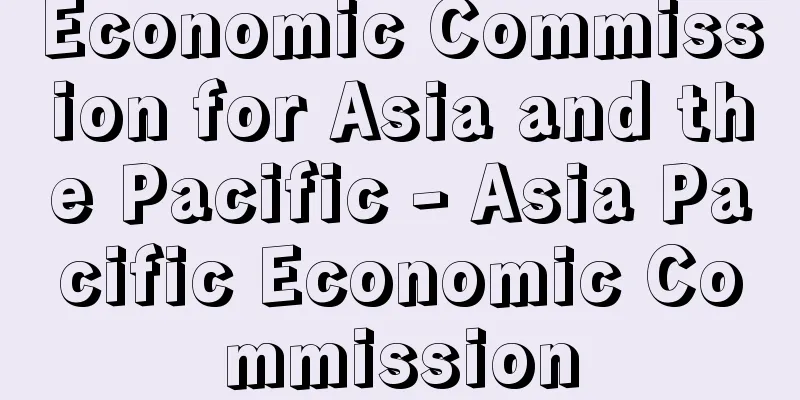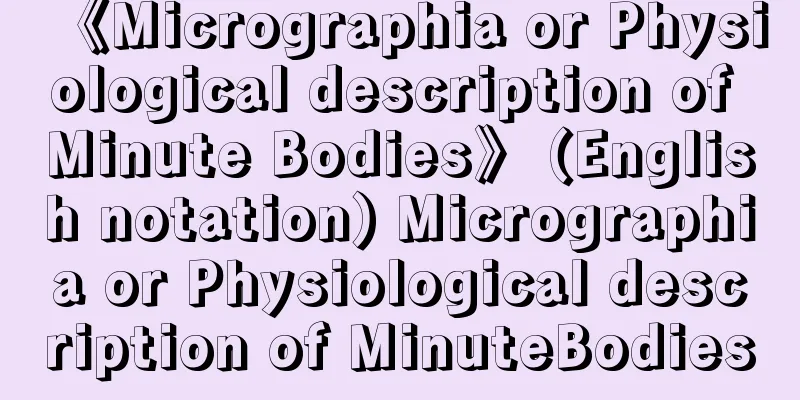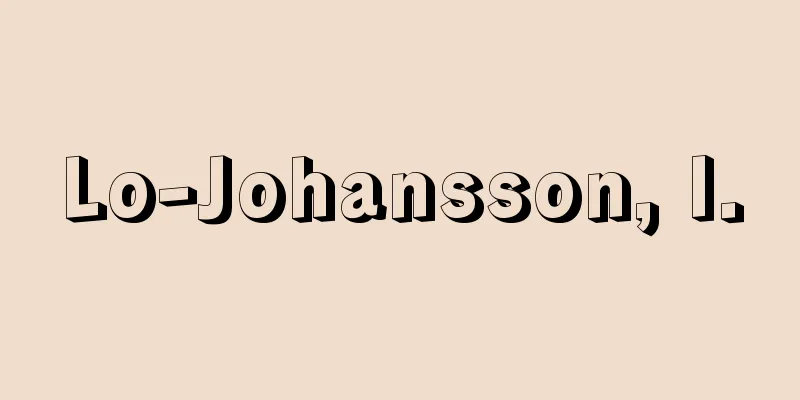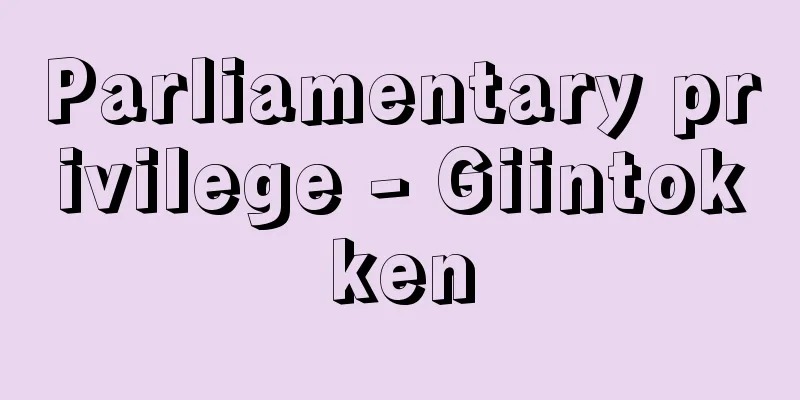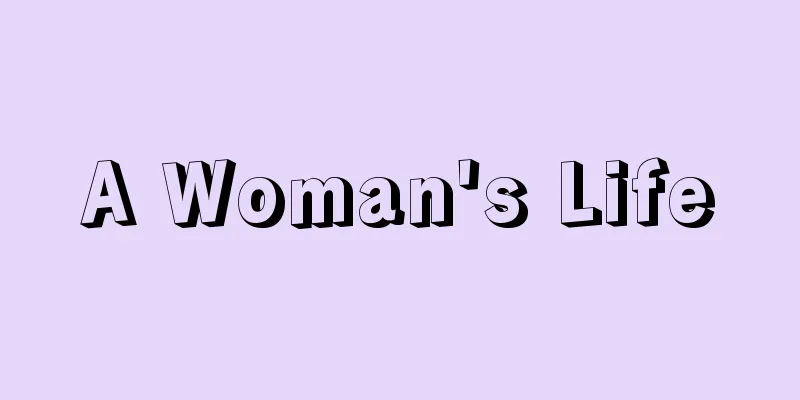Teacher - teacher (English spelling)
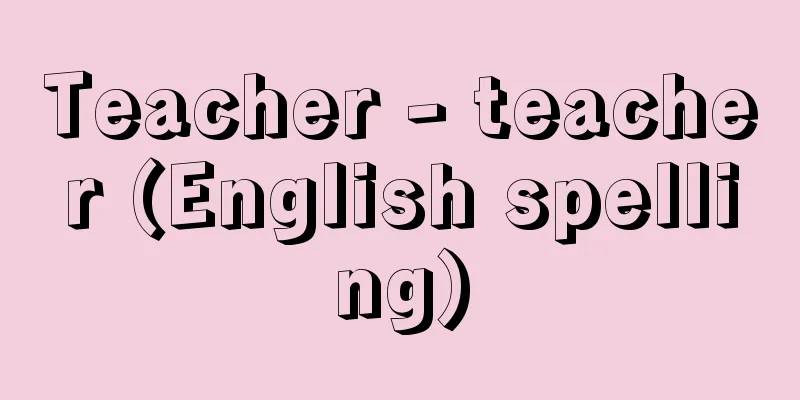
|
A teacher is someone who is in charge of education in a school or other educational institution. Synonyms include educational staff, teachers, instructors, masters, teachers, and educators. Teachers are used as a legal term for school education personnel, and are often viewed in terms of numbers. In terms of staff composition, educational staff are used in contrast to administrative staff and medical staff, and generally include not only teachers but also a wide range of education-related staff such as principals, vice principals, superintendents, and guidance counselors. Teachers have a strong individual character as mentors who teach. Instructors refer to teachers at national schools. Master has a strong master-disciple relationship of teaching and being taught, and refers to someone who conveys the path. Sensei is a title of respect not only for teaching but also for spiritual and technical leaders in general. Educator can be said to mean someone who is excellent at educational considerations. Here, we will limit the explanation to teachers in charge of school education. [Mizuhara Katsutoshi] kindsThe School Education Law states that "A school shall have a principal and a considerable number of teaching staff" (Article 7), and distinguishes the principal from teachers. Looking at the types of teachers, universities and colleges of technology have professors, associate professors, assistant professors, and lecturers. As for their duties, professors are "persons who have particularly excellent knowledge, ability, and achievements in education, research, or practice in their field of specialization, and who teach students, guide their research, or engage in research," associate professors are simply those who have "exceptionally excellent knowledge, ability, and achievements" in the professor's provision, but change it to "persons who have excellent knowledge, ability, and achievements," assistant professors are also those who have "exceptionally excellent knowledge, ability, and achievements" but change it to "persons who have knowledge, ability, and achievements," and lecturers are "engaged in duties equivalent to those of a professor or associate professor" (Article 92). In science fields, research activities are carried out on a single research topic in a team headed by a professor, whereas in humanities fields, each person, from professors to assistant professors, has their own individual tasks and often works individually, except for school administrative duties. Teachers at elementary schools, junior high schools, high schools, special needs schools, and kindergartens include vice principals, teachers, assistant teachers, school nurses, assistant school nurses, and lecturers. There are also practical assistants and house mothers. Lecturers are available full-time and part-time at all schools. As for their duties, vice principals assist the principal, organize school affairs, and, as necessary, are in charge of educating students. Teachers are in charge of educating students and pupils. School nurses are in charge of the care of students and pupils. Assistant teachers assist teachers in their duties. And lecturers are stipulated to be engaged in duties equivalent to those of teachers and assistant teachers (Article 37). In these schools, the work structure is such that, under the supervision of the principal or kindergarten principal, there are various job types and titles such as vice principals and various heads. [Mizuhara Katsutoshi] Personnel and BenefitsPersonnel matters such as appointment, dismissal, leave of absence, reinstatement, and retirement vary depending on the institution and the stage of the school. In the case of universities, they are handled by the national university corporation, the head of a local government (public), or the institution that established the university (private). However, they are subject to application from the faculty council, the board of trustees, and the president. In the case of public high schools, junior high schools, and elementary schools, the prefectural board of education is the main authority, while in the case of private schools, the corporations that established them are in charge. In the case of university-affiliated schools, the president of the university selects the teachers, and in the case of public schools, the chief executive of the local government appoints them. However, as they are incorporated as part of the personnel exchanges between prefectures and city boards of education, the boards of education are quite involved. In the case of national schools, salaries were determined by the "Law Concerning Salaries of General Employees," but since they were granted corporate status in 2004, salaries are determined by each corporation. For public school teachers, salaries are determined by ordinance in accordance with the same law. For private schools, the founder decides the salary. Types of allowances include "living allowance" such as dependent allowance, end-of-term allowance, commuting allowance, housing allowance, and starting salary adjustment allowance; "regional allowance" such as adjustment allowance, remote area allowance, and cold area allowance; "job allowance" such as special adjustment allowance (managerial position allowance), special work allowance, industrial education allowance, part-time correspondence course allowance, and special allowance for teachers of compulsory education, etc.; and "efficiency allowance" such as diligence allowance and night duty allowance. Among these allowances, the special allowance for teachers of compulsory education institutions was enacted in 1971 as the "Law on Special Measures Concerning Salaries, etc. of Educational Personnel of National and Public Compulsory Education Institutions, etc." (now the "Law on Special Measures Concerning Salaries, etc. of Educational Personnel of Public Compulsory Education Institutions, etc."). However, during the process of establishing this law, there was much discussion regarding the nature of the teaching profession. [Mizuhara Katsutoshi] Teacher quotaThe teacher quotas for compulsory education schools are determined based on the size of the school, according to the "Law Concerning Standards for Class Organization and Teacher Quotas for Public Compulsory Education Schools" (1958). For high schools, the quotas are stipulated by course and department, according to the "Law Concerning Standards for the Establishment, Proper Placement, and Quotas of Teachers and Personnel for Public High Schools" (1961). For technical colleges, junior colleges, and universities, the quotas are stipulated according to their respective establishment standards. Regarding public elementary and junior high schools and the elementary and junior high departments of special education schools, the Sixth Public Compulsory Education School Teacher Allocation Improvement Plan states: In addition, for public high schools and the upper divisions of special education schools, the "Fifth Public High School Class Organization and Teacher Allocation Improvement Plan" stipulates that: [Mizuhara Katsutoshi] Foreign TeachersIn the United States, teachers are trained at higher education institutions. Teacher qualification and licensing systems vary from state to state. The authority to appoint elementary and junior high school teachers is the board of education that established the school. Teachers are classified as local government employees, but their salary systems vary widely. In the UK, teachers are trained either in three-year teacher training colleges or in one-year education departments after university. The former train mainly primary school teachers, while the latter train mainly secondary school teachers. Public school teachers are appointed and paid by local education authorities. In France, elementary school teachers are trained at three-year normal schools, while secondary school teachers are trained at universities and Écoles normales. Elementary school teachers are appointed by the rector of the university district, and secondary school teachers are appointed by the Minister of Education. Both are national civil servants, and their salaries are paid by the government. In Germany, elementary school teachers and middle school teachers are trained at universities of education or comprehensive universities, gymnasium teachers at comprehensive universities, vocational school teachers at vocational school teacher training universities, and special school teachers who hold qualifications as elementary school teachers are trained at medical education institutes attached to universities. Teachers are state civil servants appointed by the Minister of Education of each state. Their salaries are also paid by the state. In Russia, teachers for the lower grades of primary school are trained at normal schools, which are four-year secondary vocational schools that require completion of eight years of compulsory education to enter. Teachers for grades 4 to 10 are trained at pedagogical universities and comprehensive universities. Principals of primary and secondary schools are selected by the Ministry of Education of the Federal Republic, but all other teaching staff are appointed by local administrative bodies based on the principal's recommendation. Salaries are paid by the state. In China, the standard of training varies by school: teachers for higher secondary schools are trained at normal universities that recruit students from all over the country and at normal colleges that recruit students from within the province, while teachers for elementary secondary schools are trained at normal schools and elementary school teachers at secondary normal schools. Salaries are somewhat lower than the average income of workers, and the social status of teachers is far lower than in Japan. [Mizuhara Katsutoshi] History of Japanese teachersThe birth of the modern teacherA survey of the status of terakoya teachers at the end of the Edo period showed that 25% were samurai, 41% were commoners, 19% were monks, 7% were priests, and 8% were doctors. The fact that commoner teachers made up the majority at 41% shows that education for the common people was quite widespread. With the Meiji Restoration, modern schools were established to carry out the modernization of Japan and the enlightenment of the nation, and new qualifications were required of teachers to meet these demands. To that end, a normal school was established in Tokyo in 1872 (Meiji 5), but it was difficult to supply a large number of teachers at once. Elementary schools were also established throughout the country in the same year, and so qualifications and regulations were ignored. Anyone with some knowledge of Japanese and Chinese studies was appointed, including teachers from traditional domain schools, village schools, and temple schools, as well as priests, monks, and samurai. Afterwards, seminars were held to pass on the new knowledge and teaching methods. The Ministry of Education, taking into account the actual conditions of each region, established the "Guidelines for Elementary School Teachers," "Guidelines for Granting Elementary School Teaching Licenses," and "Outline of Teaching Regulations for Normal Schools" in 1881 (Meiji 14). Modern teaching profession is different from the teachers at pre-modern temple schools; the nature of schools is determined by national demand, and the necessary qualities of teachers are determined from these standards. This also set the framework for teacher training and qualification systems. For this reason, the teaching profession was standardized and modernized, but at the same time, it had to be standardized and controlled. Although teachers with a certain level of academic ability were appointed to the teaching profession, at the same time, they were forced to become estranged from the local residents and to lose the primary collective intimacy with the children, and gradually came to take on the character of low-level bureaucrats. This tendency progressed even more as the teaching profession entered a period of development, and the contradictions also became apparent. [Mizuhara Katsutoshi] Development of public education and modernization of the teaching professionThe period from 1900 (Meiji 33) to 1930 (Showa 5) was a time of remarkable development in public education, bringing about major changes in the composition and attitude of teachers, as well as in the nature and social status of the teaching profession. At the time of its establishment, the teaching profession numbered less than 100,000 people, but by 1930 it had grown into a large occupational group of 230,000 people. Among these, a large number of female teachers entered the profession, accounting for one-third of elementary school teachers. The average number of teachers in a school also rose from less than two at the time of its establishment to around nine by 1930, and a system of division of responsibilities by class and grade, the establishment of a system of teacher management and guidance, and the modern organization of the teaching profession were introduced. In teacher training, a second course was established in addition to the first course of the normal school, which had been in place until then. This caused the number of students at normal schools to increase from 20,000 to 45,000, and although insufficient, a mass training measure was adopted. Furthermore, during this period, against the backdrop of the development of capitalism, problems arose regarding the livelihood of teachers, and a minimum salary had to be guaranteed by law. As a result, some teachers began to view teaching as a lowly occupation or to change jobs, but on the other hand, their awareness of the teaching profession also increased, and among the more fortunate teachers at the elementary schools attached to normal schools and private elementary schools, some began to actively recognize their own expertise and to live as experts in educational practice. Others, in the midst of miserable circumstances, began to recognize themselves as workers, and formed unions to defend the right to live. At this stage, the teaching profession finally took on a modern appearance. Secondary school teachers were trained at higher normal schools and universities, but they enjoyed a much more favorable status and treatment than elementary school teachers, and from 1929 (Showa 4) they were trained at the University of Letters and Sciences (Tokyo and Hiroshima), which had been upgraded from the Higher Normal Schools. Before World War II, there were disparities in education and treatment among teachers depending on the school level (elementary, middle, and high school), as well as disparities in social class background, and it became common to view teachers as being ranked according to their school level. [Mizuhara Katsutoshi] Modern teachersLooking at the overall number of full-time teachers at national, public and private schools, as of October 2007, there were 106,859 kindergarten teachers, 389,819 elementary school teachers, 231,528 junior high school teachers, 234,278 high school teachers, 58,591 special needs schools teachers, 42,096 vocational schools teachers, and 10,229 miscellaneous schools teachers. The number of teachers at many schools is decreasing year by year. In terms of educational background, in 2007, 3.0% of elementary school teachers had graduate school degrees, 84.1% had university degrees, and 12.5% had junior college degrees, while for junior high school teachers, 5.8% had graduate school degrees, 88.0% had university degrees, and 6.0% had junior college degrees, with educational background improving year by year. The number of people with graduate school degrees is still low, but is increasing rapidly. The post-war principle of "training teachers at universities" has provided roughly the same conditions for training teachers for elementary, junior high, and high schools, and has largely eliminated the disparities between schools. This is the result of the post-war principle of teacher training. As of October 2007, the percentage of female teachers was 92.9% in kindergartens, 61.7% in elementary schools, 40.3% in junior high schools, 27.1% in high schools, 57.4% in special needs schools, 50.7% in vocational schools, and 39.1% in miscellaneous schools. [Mizuhara Katsutoshi] "Studies on the History of Japanese Teachers" by Tetsuo Ishidoya (1967, Kodansha)" ▽ "When Teachers Become Teachers" edited by Yoshihiro Saito (1972, Kokudosha) ▽ "Studies on the History of Teacher Training in Modern Japan" by Katsutoshi Mizuhara (1990, Kazama Shobo) [Reference] | | | | |Source: Shogakukan Encyclopedia Nipponica About Encyclopedia Nipponica Information | Legend |
|
学校などの教育施設で、教育を担当する者をいう。類語として、教育職員、教師、教官、師匠、先生、教育者などがある。教員は、学校教育担当者の法令用語として使用され、員数の観点からとらえられることが多い。 教育職員は、職員構成上、事務職員や医療職員などと対(つい)にして使用され、教員に限らず、校長、教頭、教育長、指導主事など広く教育関係職員を含むのが一般的である。教師は、教えを与える師という個の性格を多分にもつ。教官は国立学校の教員をいう。師匠は、仕込む・仕込まれるという師弟関係が強く、その道を伝える者の意。先生は、教職に限らず広く精神的・技術的指導者に対する敬称。教育者は、優れて教育的配慮のできる人の意といえる。ここでは、学校教育担当の教員に限定して説明する。 [水原克敏] 種類学校教育法では、「学校には、校長及び相当数の教員を置かなければならない」(第7条)として、校長は教員と区別されている。教員の種類をみると、大学および高等専門学校には、教授、准教授、助教、講師がある。その職務は、教授は「専攻分野について、教育上、研究上又は実務上の特に優れた知識、能力及び実績を有する者であつて、学生を教授し、その研究を指導し、又は研究に従事する」、准教授は教授についての規定のうち「特に優れた知識、能力及び実績を有する者」の部分が「優れた知識、能力及び実績を有する者」と変わるだけであり、助教は同じく「特に優れた知識、能力及び実績を有する者」の部分が「知識、能力及び実績を有する者」となり、そして講師は「教授又は准教授に準ずる職務に従事する」となっている(第92条)。理科系の場合には、一つの研究課題について、教授を頂点としたチーム編成によって研究活動をするが、文科系の場合には、教授から助教までそれぞれ個別の課題をもち、校務分掌を除いては個々に活動していることが多い。 小学校、中学校、高等学校、特別支援学校、幼稚園の教員としては、教頭、教諭、助教諭、養護教諭、養護助教諭、講師がある。ほかに実習助手、寮母がある。なお講師の場合には、いずれの学校でも常勤と非常勤とがある。職務は、教頭は、校長を助け、校務を整理し、および必要に応じ児童の教育をつかさどる。教諭は、児童・生徒の教育をつかさどる。養護教諭は、児童・生徒の養護をつかさどる。助教諭は、教諭の職務を助ける。そして講師は、教諭・助教諭に準ずる職務に従事すると規定されている(第37条)。これらの学校では、校長・園長の監督のもとに、教頭のほか各種主任などの職種や役職を置いて、職務体制をとっている。 [水原克敏] 人事・待遇任用、免職、休職、復職、退職の人事は、設置者や学校の段階によって異なる。大学の場合には、国立大学法人か、地方公共団体の長(公立)か、設置者の法人(私立)かが行う。ただし、教授会、評議会、学長からの申請による。 公立の高等学校、中学校、小学校の場合には、主として都道府県教育委員会が、私立の場合には設置者の法人が行う。大学附属校は、学長が選考し、公立では地方公共団体の長が任命する。ただし、県・市教育委員会の人事交流の一環に組み込まれているので、教育委員会がかなり関与している。 給与は、国立学校の場合、「一般職の職員の給与に関する法律」によって定められていたが、2004年(平成16)に法人格を与えられてからは、各法人によって定められている。公立学校教員は、同法律に準じて条例によって決定されている。私立の場合は、その設置者が決定している。手当の種類は、「生活給的」なものとして、扶養手当、期末手当、通勤手当、住居手当、初任給調整手当。「地域給的」なものとして、調整手当、僻地(へきち)手当、寒冷地手当など。「職務給的」なものとして、特別調整手当(管理職手当)、特殊勤務手当、産業教育手当、定時制通信制手当、義務教育等教員特別手当。そして「能率給的」なものとして、勤勉手当、宿日直手当などがある。 これらの諸手当のなかで、義務教育等教員特別手当は、1971年(昭和46)に「国立及び公立の義務教育諸学校等の教育職員の給与等に関する特別措置法」(現在は「公立の義務教育諸学校等の教育職員の給与等に関する特別措置法」)として制定されたが、同法の成立過程においては、教職の性格をめぐる論議がなされた。 [水原克敏] 教員の定数義務教育諸学校の教員定数は、「公立義務教育諸学校の学級編制及び教職員定数の標準に関する法律」(1958)により、学校規模を基準として定められている。高校は、「公立高等学校の設置、適正配置及び教職員定数の標準に関する法律」(1961)により、課程別・学科別に規定されている。高等専門学校、短期大学、大学は、それぞれの設置基準により規定されている。 公立の小・中学校および特殊教育諸学校の小・中学部については、「第六次公立義務教育諸学校教職員配置改善計画」により、 また、公立の高等学校および特殊教育諸学校の高等部については、「第五次公立高等学校学級編制及び教職員配置改善計画」により、 [水原克敏] 外国の教員アメリカでは、高等教育機関で養成される。教員資格・免許制度は各州によって異なる。小・中学校教員の任命権者は、設置者の教育委員会である。身分は一種の地方公務員であるが、給与体系は種々異なる。 イギリスでは、3年制の教員養成大学か、大学卒業後の1年制の教育学科かで養成される。前者は主として初等学校の教員を養成し、後者は主として中等学校教員を養成する。公立学校の教員は、地方教育当局によって任命され、給与も同当局によって支給される。 フランスでは、3年制師範学校で小学校教員が養成され、大学と高等師範学校で中等学校教員が養成される。小学校教員は大学区総長より任命され、中等学校教員は文部大臣から任命される。いずれも国家公務員であり、給与は国から支給される。 ドイツでは、国民学校教員と中間学校教員は教育大学か総合大学かで養成され、ギムナジウム教員は総合大学で、職業学校教員は職業学校教員養成大学で、特殊学校教員は国民学校教員の資格保持者を対象に、大学付置の医学教育研究所等で養成される。教員は各州の文部大臣から任命される州公務員である。給与も州から支給される。 ロシアでは、小学校低学年担当教員は師範学校で養成されている。同校は8年制義務教育修了者を入学資格とする4年制の中等専門学校である。第4~第10学年担当の教員は教育大学と総合大学で養成される。小・中学校の校長は連邦共和国の教育省によって決定されるが、校長以外の教職員は、校長の推薦をもとに地方行政機関によって任命される。給与は国から支給される。 中国では、全国から学生募集する師範大学と、省内から募集する師範学院とが高級中学校の教員養成をし、初級中学校の教員は師範学校で、小学校教員は中等師範学校で養成するなど、学校によって養成水準が異なる。給料は労働者の平均収入に比してやや低く、教師の社会的地位も日本に比してはるかに低い状況にある。 [水原克敏] 日本の教員史近代的教師の誕生幕末の寺子屋師匠の身分調査では、武士25%、平民41%、僧侶(そうりょ)19%、神官7%、医者8%であった。平民の寺子屋師匠が最多数の41%を占めていたことは、庶民教育がかなり普及していたことを示している。 明治維新によって、文明開化を担う近代的学校が創設され、教員もそれにこたえるだけの新しい資質が要求された。そのために、1872年(明治5)東京に師範学校を創設したが、一度に大量に教員を供給することは困難であった。小学校も同年に全国で創設したため、資格や規則を無視し、従来の藩校、郷学、寺子屋の師匠はもちろん、神官、僧侶、士族など、多少和漢学の素養のある者ならだれでも任命し、その後、講習会を開いて新しい知識と教授法とを伝習するという方法をとった。 文部省は、地方の実態を踏まえながら、「小学校教員心得」「小学校教員免許状授与方(じゅよかた)心得」「師範学校教則大綱」を1881年(明治14)に制定。近代的な教職は、前近代の寺子屋の師匠とは違い、国家的要請によって学校のあり方が決定され、その基準から教員としての必要な資質も決定された。教員養成制度や資格制度のあり方もそれによって枠づけられた。 それだけに、教職は標準化され近代化されたが、反面、画一化され統制化されなければならなかった。いちおうの学問的レベルを有する教員が教職を担うことにはなったものの、同時に、地域住民との乖離(かいり)、子供らとの第一次集団的親密さの喪失を余儀なくされ、しだいに末端官吏としての性格を強めるようになった。この傾向は、教職の発展期に入っていよいよ進行し、また矛盾も顕在化することになる。 [水原克敏] 公教育の発展と教職の近代化1900年(明治33)から1930年(昭和5)にかけて、公教育の発展が著しく、教員の構成や意識に、また教職の性格や社会的地位などに大きな変化をきたした時期であった。成立期には10万人にも満たなかった職業集団が、1930年までには23万人という大職業集団に成長した。そのなかには女性教員も大量に進出し、小学校教員では3分の1を占めるようになった。そして学校の平均教員数も、成立期には2名に満たなかったのが、1930年ごろには約9名程度になり、学級・学年などの分担制、教員の管理指導体制の確立、教職の近代的組織化がなされてきた。 教員養成では、従来の師範学校の本科第一部のほかに本科第二部が創設され、これによって師範学校の生徒数が2万人から4万5000人にまで増大し、不十分ながら大量養成の方策がとられた。さらにこの時期は、資本主義の発達を背景に教員の生活問題が惹起(じゃっき)され、法律によって俸給の最低額が保障されなければならなかった。この結果、教職を賤業(せんぎょう)視したり、転職したりする者が出てきたが、反面では教職への自覚も高まり、師範学校の附属小学校や私立小学校など恵まれた教員たちのなかには、自らの専門性を積極的に認め、教育実践の専門家として生きようとする者も出てきた。あるいは悲惨な状況のなかで、自らを労働者として認め、生活権の擁護を主張して組合を結成する者も現れてきた。この段階に至って、教職はようやく現代的様相を帯びてきたのである。 中等学校教員の場合には、高等師範学校と大学とで養成されたが、小学校教員に比してはるかに恵まれた地位と待遇にあり、1929年(昭和4)からは、高等師範学校から昇格した文理科大学(東京と広島)で養成されることになった。 第二次世界大戦前の教員は、初等・中等・高等の学校レベルによる教養と待遇、そして出身階層に格差がみられ、学校レベルに対応した教員への序列視が一般化することになった。 [水原克敏] 現代の教員国立・公立・私立学校の本務教員数の全般をみると、2007年(平成19)10月時点で、幼稚園10万6859人、小学校38万9819人、中学校23万1528人、高等学校23万4278人、特別支援学校5万8591人、専修学校4万2096人、各種学校1万0229人となっている。多くの学校が年々減少する傾向にある。 学歴は、2007年(平成19)の小学校教員の場合、大学院修了者が3.0%、大学卒84.1%、短大卒12.5%であり、中学校教員の場合は、大学院修了者5.8%、大学卒88.0%、短大卒6.0%という状況で、年々学歴は向上してきている。大学院修了者はまだ少ないが急速に伸びつつある。 第二次世界大戦後の「大学で教員養成する原則」は、小学校、中学校、高等学校の教員養成にほぼ同様の条件を提供し、それぞれの学校間の格差をかなり解消してきた。戦後の教員養成の原則がもたらした成果である。 女性教員の占める割合は、2007年(平成19)10月時点で、幼稚園92.9%、小学校61.7%、中学校40.3%、高等学校27.1%、特別支援学校57.4%、専修学校50.7%、各種学校39.1%となっている。 [水原克敏] 『石戸谷哲夫著『日本教員史研究』(1967・講談社)』▽『斎藤喜博編『教師が教師となるとき』(1972・国土社)』▽『水原克敏著『近代日本教員養成史研究』(1990・風間書房)』 [参照項目] | | | | |出典 小学館 日本大百科全書(ニッポニカ)日本大百科全書(ニッポニカ)について 情報 | 凡例 |
Recommend
Probosciger aterrimus (English)
...The white-colored Great Cockatoo (illustration...
Positivism - Positivism
A philosophical stance based solely on empirical f...
Dante Alighieri
The greatest Italian poet. With his immortal clas...
saung gauk (English spelling) saunggauk
...Bow harp from Myanmar. Its correct name is sau...
Charles E. Merriam
He is an American political scientist who is also...
Daikon Island
An island floating in Lake Nakaumi in the northea...
Kiryu sand - Kiryuzuna
…(e) River sand Sand from the upper reaches of ri...
From
〘adv〙 (sometimes accompanied by 「と」) =うkari※Shiji ...
hip bone
...Sex differences exist in the pelvis as a whole...
Heidelberg - Heidelberg (English spelling)
A city in the state of Baden-Württemberg in south...
Numerology
It is a form of divination using numbers, also kno...
loudness
...If monophonic intelligibility is around 80%, s...
Tectonite (English spelling)
A metamorphic rock formed by mechanical metamorphi...
Matsuura Kengyo
[raw]? [Died] November 21, 1822. Kyoto jiuta koto ...
International Harvester Co.
A major American manufacturer of trucks, agricultu...


